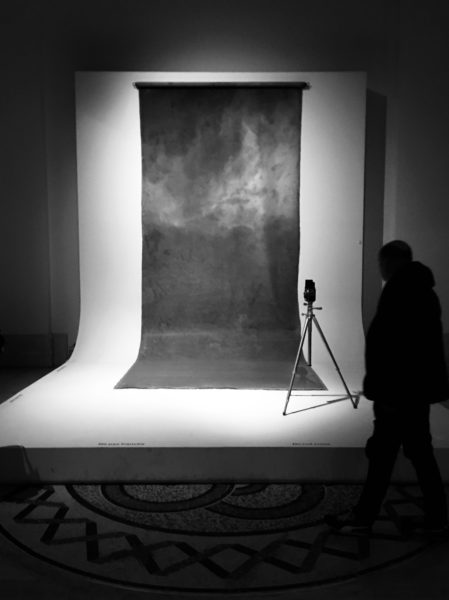Over the holidays, I was fortunate to visit the Yves Saint Laurent: Dreams of the Orient exhibit, currently on display at the Musée Yves Saint Laurent in Paris until 27 January 2019. The exhibit showcases fifty haute couture designs—clothes, accessories, and sketches—that were inspired by Indian, Chinese and Japanese culture. The fashions are flanked by pieces of traditional Asian art that Saint Laurent would have studied. Another focus of the exhibit is the highly controversial launch and ad campaign of Yves Saint Laurent’s first perfume Opium.

Much was on my mind as I walked through the small but very well designed museum. Pot lights illuminating the dark rooms provided a sense of liminality, as if one is half-way between a public and private space. I found it particularly interesting to walk through the exhibit with alongside my brother, who could not help but notice that the displays of Orientalist fashion echoed the theoretical discourse put forward by Edward Said in Orientalism, his foundational text on postcolonial theory. As a student of international relations, my brother went into the exhibit with a mind primed for the cultural impetus of Saint Laurent’s designs. As we made our way through the museum, he could not help but comment that Saint Laurent had problematically fashioned his collection out of a homogenised Western imagination and depiction of the Orient.
In order to construct his vision for the show, Saint Laurent referenced Western literary works and histories that convey a dominant image of what the Orient represents. Saint Laurent drew on his own imagination to create designs that reflected the frames, tropes and categorisations of the Orient as described by these Western authors—without having ever travelled to these countries (save for Japan) himself. Although Said’s book was only published a year after Saint Laurent’s 1977 ‘Les Chinoises’ collection was unveiled to the world, the display today nonetheless challenges us to reconcile the production of Orientalist knowledge and fashion with our own understanding of how Western history depicts and represents the Orient. Linked to this is the idea of cultural appropriation that evokes the same themes of colonialism and oppression still largely dominating political and societal discourse to this day.

At the same time, is important to consider the exhibit in light of the manner in which Saint Laurent originally expected the designs to be viewed. For instance, the exhibit deliberately includes the word ‘dreams’ in the title, a fitting word choice that allows one to appreciate the collection as a dream representing a fantasy of the exotic beauty Saint Laurent imagined the Orient could offer viewers through fashion. Irrespective of the political implications, the sheer beauty, artistry and craftsmanship of the collection are undeniable and should not go unnoticed. Saint Laurent’s clothes remain true masterpieces and their elegance, finesse and uniqueness should be appreciated in the specific cultural context and historical processes in which they were designed.
Perhaps the designs can only be fully appreciated if we view them as an exhibition of a collection that reflects a particular cultural, historical and political understanding present in 1977. However, if these same designs were sent down the Fall/Winter 2019 Saint Laurent catwalk, would we be able to continue to acknowledge their beauty and artistry, or would we feel compelled to criticise them for their cultural appropriation?






















